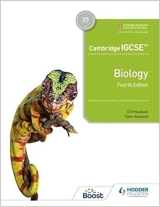Plants. An Introduction to Buds and Twigs
Buds
Structure
A bud is a "condensed" shoot. Its stem is very short and its leaves are so close that they overlap, each one wrapping round the next above it. The inner leaves are crinkled and folded, since a large surface area is packed into a small space. The outermost leaves are often thicker and tougher, and sometimes black or brown. These are the bud scales and they protect the more delicate, inner, foliage leaves from drying up, from damage by birds, insects, fungi etc. and, to some extent, from extremes of temperature. At the end of the bud's short stem is either a flower, or a growing point where rapid cell division will take place later on when the next bud is forming.
Types of bud
Terminal buds are formed at the ends of main shoots or branches during the season's growth. There are also buds in the axils of the leaves. These are called axillary or lateral buds. If they do not grow in the following year, they are also described as dormant buds.
When terminal buds grow, they continue growth in length of the shoot, whereas lateral buds make new branches. Either type may produce a flower instead of, or in addition to, a leafy shoot. If this happens in a terminal bud, growth is continued in the following season by one or more lateral buds, since the flower or inflorescence drops away leaving no growing point.
Growth
In the spring, the stem of the bud begins to elongate and the bud scales are pushed apart. As the stem grows in length it spaces out the leaves, which unfold and spread out their surface. The bud scales often curl back and in a few weeks fall off. On exposure to light, the chlorophyll in the leaves develops fully, and photosynthesis begins soon after.
Function
The bud-forming habit gives the plant the advantages of being able to present a photosynthesizing surface to the atmosphere very rapidly after weather conditions become favourable, The leaves, already formed in the bud, are available almost at once, whereas it would take many weeks for them to grow from the single cells at the growing point.
Leaf fall, or abscission
Most trees shed their leaves. Deciduous trees do so in the autumn, while evergreens may shed theirs at intervals throughout the year. In certain trees, abscission takes place as follows: cells at the base of the leaf-stalk divide and form layers of cells across the region where the petiole joins the stem. The inner layers of this new tissue become corky and the vessels become blocked so that the leaf is deprived of water. Before this occurs, the contents of the cell begin to break down chemically, producing the characteristic red and yellow autumnal tints. The cells' contents are digested and the soluble products absorbed back into the tree. The cells beyond the corky layer degenerate, and the dried-up leaf falls, leaving a scar on the stem protected from the entry of bacteria and fungi by impermeable cork. The details of abscission vary in different species.
Twigs
Winter twigs
The leaf scars on twigs are a characteristic shape for each species, the sealed vascular bundles, making a pattern of dots in them. Since each leaf usually has a bud in its axil, above each leaf scar there should be a lateral bud.
Earlier in the year, when the terminal bud was sprouting, the bud scales, unlike the foliage leaves, were not spaced out on the stem, and when they fell off they left narrow scars, close together, extending from a quarter to half-way round the stem. These are commonly called girdle scars and, since they mark the position of each year's terminal bud, the length of stem between each set of girdle scars represents one year's growth.
On many twigs there is a scattering of small dots. These are lenticels, gaps in the bark with areas of loosely packed cells, which provide pores through which the stem can exchange oxygen and carbon dioxide
Some characteristics of four common trees
Horse-chestnut
Large, brown buds with sticky scales; conspicuous white flowers, in tall spikes, growing soon after the buds open in the spring; large, green spiky fruits containing shiny, brown seeds (conkers); clear girdle scars and characteristic leaf scars; deeply divided, palmate leaf .
Ash
Smooth, grey bark; black bud scales; two lateral buds close behind the terminal bud; winged fruits hanging in bunches; compound leaf with opposite leaflets.
Sycamore
Smooth, grey bark; green bud scales; winged fruits.
Oak
Rough bark; clusters of small, brown buds near ends of twigs; lower branches very thick and, often, nearly horizontal; fruits are acorns; may bear marble galls on smaller twigs.
For illustrations to accompany this article see Plants: Buds and Twigs
| Search this site |
| Search the web |
© Copyright D G Mackean & Ian Mackean. All rights reserved.


